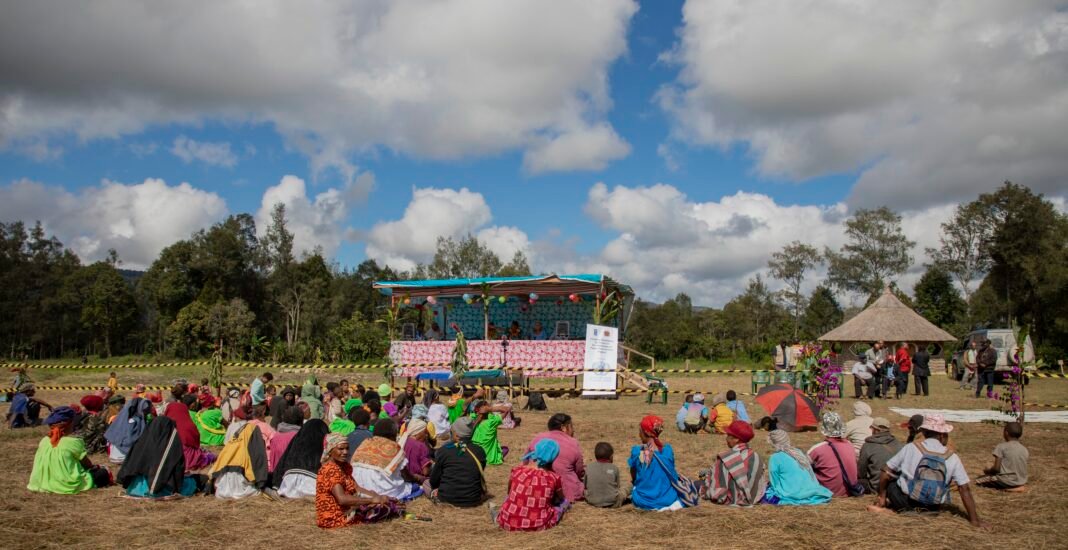Located in between the beautiful and remote highlands of Papua New Guinea lie the mountainous regions of Hela and Southern Highlands.
Within the highlands, unresolved disputes can lead to tribal violence. In the past 30 years, this region has experienced reoccurring and violent conflicts, which have led to casualties, displacement, and human rights conflicts.
In addition to this, Papua New Guinea’s distinctive geography and climate make it one of the world’s most disaster-prone countries.
Moreover, gender inequality is at the center of UNDP’s development programming for the Papua New Guinea Country Office.
Climate change in Papua New Guinea
A recent climate risk assessment in Hela and Southern Highlands unveiled some of the key dangers, present and future.
An increase in rainfall and temperatures could result in more occasional and severe landslides, floods, drought, and frost, which threatens local agricultural production, livelihoods, and peace.
Moreover, climate change can escalate underlying challenges, such as resource scarcity, poverty, gender equality, exclusion, and population growth.
Such conditions can give way to fiercer competition for diminishing natural resources, land disputes, and internal displacement, all adding fire to the potential for violent conflicts.
However, at the front of these conditions are women and girls, who serve as primary caregivers, responsible for providing food, water, and energy for their families and communities.
Gender Inequality
Papua New Guinea is still struggling with the world’s highest gender inequality, ranking at 169 out of 170 countries, in the 2021 22 Human Development Report’s Gender Inequality Index.
Gender-based violence (GBV) is widespread. It impacts two out of every three women in their lifetime. Around 60 percent of them experience physical or sexual violence from an intimate partner.
Moreover, Papua New Guinea has some of the highest rates of gender inequality in the world, according to different sources. Some of these include violence against women, and limited education, where according to UNICEF only 47 percent of the girls in Papua New Guinea attend primary school and only 17 percent of the girls attend secondary school.
In terms of employment, according to the World Bank, only 20 percent of the women in Papua New Guinea participate in the labor force as compared with 75 percent of men.
Under political representation, in the 2022 national election, only 2 of the 113 seats in parliament were held by women, representing only 1.7 percent of the total seats.
Women in Papua New Guinea experience challenges in getting a hold of reproductive and maternal health services. According to the UN Population Fund, the maternal mortality rate in the country is 215 deaths per 100,000 live births, which is one of the highest in the world.
However, there rises hope even within these struggles.
Solutions
In Hela and Southern Highlands, women have risen against the odds, turning up as leaders in lowering climate-led security risks, arranging ceasefires, and advocating reconciliation.
Identifying the transformative role of women, the UNDP and the International Organization for Migration (IOM) supported by the UN Peacebuilding Fund, launched the “Preventing Climate-Induced Conflicts Through Empowered Women’s Leadership” project.
The project allows women leaders to become community resilience advocates. It also supports them to participate in decision-making processes to address climate-led security risks at both the community and household levels.
Furthermore, the UNDP Papua New Guinea Gender Equality strategy yields strategic direction to effectively integrate gender equality at both organizational and program levels.
The UNDP Gender Equality Strategy 2022 25 outlines important priority areas for action. These include bettering climate change and resilience, peacebuilding, and humanitarian support for women.
It also encourages promoting gender-responsive governance, emphasizing violence against women and girls and bolstering women’s participation in the decision-making process.



